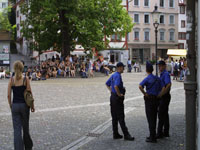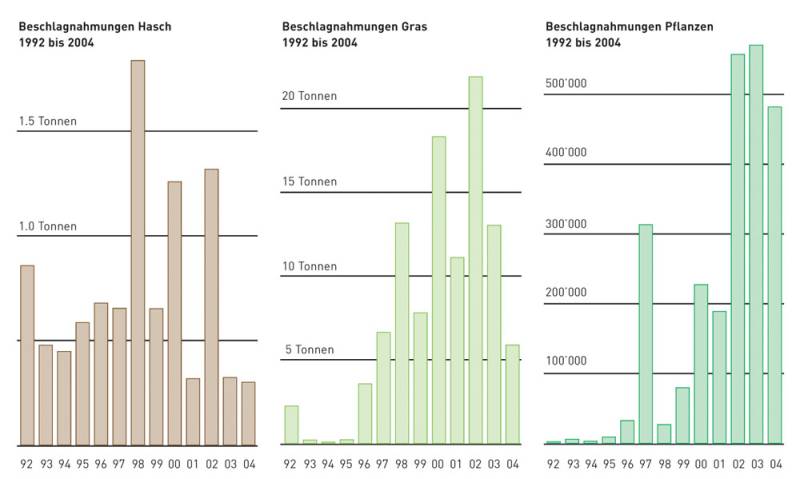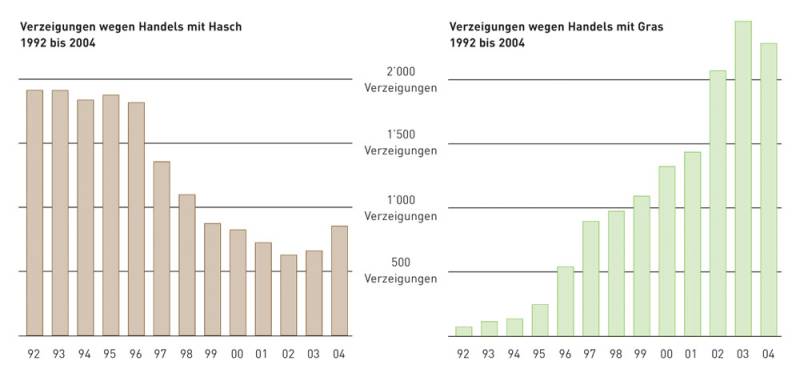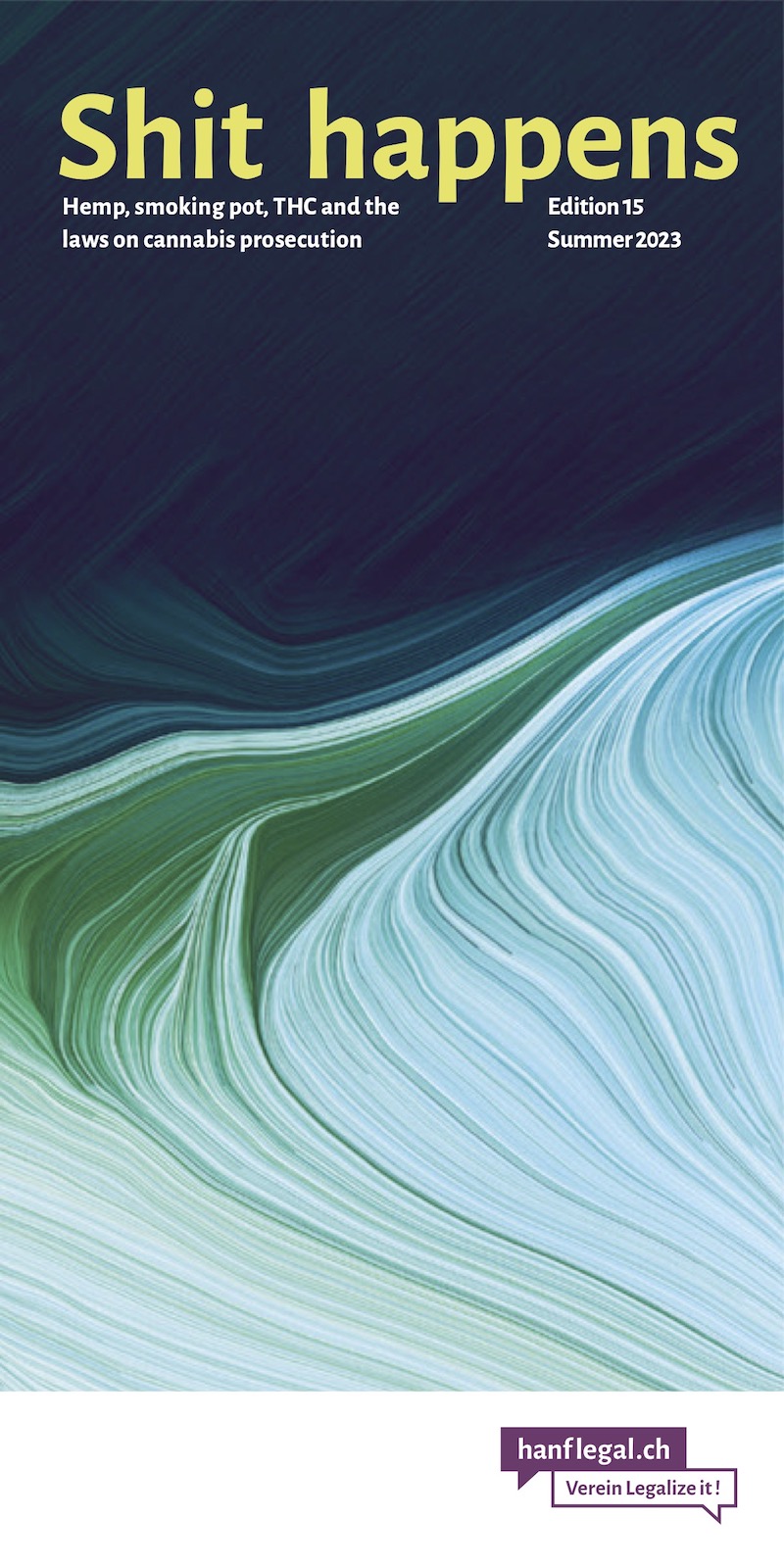- THC & Law:
2004: A new vintage Repression in figures
27,379 seizures with a total of 482,071 confiscated hemp plants and 6,179,690 grams of seized THC goods, plus 40,384 reprimands against people who were handling THC - that's what we had in 2004 from a police perspective.
2004 confirms now also statistically, what we could determine during our legal consultations in the last year: The fight against hemp and the people who handle it continues undaunted. In many police, prosecutorial and judicial working hours THC products are confiscated, THC-sellers are sentenced and THC-users are fined. After all, this way quite a few police officers, prosecutors and judges get a job - there must be hundreds of people in Switzerland who make a living out of rummaging around for the oh-so-evil hemp.
However: The seizures at weed have dropped quite a bit after the highs of the last years. This clearly reflects the fact that there are hardly any more hemp fields on a large scale. This means that no more tons can be found at once during a raid. And in the case of hash (which is again increasingly taking the place of weed), the police could not really make a find. It is unclear whether really only little hash has been imported (again) or whether the police have not yet seen through these new-old hash connections?
In any case, the numbers of hemp plants remained surprisingly high, even though there were no more large, open outdoor fields to be confiscated. We suspect that now more and more hemp plant seizures come from indoor plants that have been busted. Unfortunately, the police do not make a distinction in their statistics between hemp plants grown under artificial light and hemp plants grown under sunlight.
In any case, police and newspaper reports indicate that a large number of indoor plants were discovered and confiscated by the police last year. Among them were also many large and professionally run. After the increasing repression since the turn of the millennium, many producers moved from the open fields to the covered halls. But here, too, many were caught: because of high electricity bills, because of ventilation problems, because of break-ins, because of water damage and also because of internal disputes (and subsequent charges).
But despite the intense repression, police forces were able to seize much less THC products than in previous years. The quantity consumed, however, is likely to have remained pretty much the same. Thus, the efficiency of police work in this area has declined.
However, the numbers are slightly increasing in the case of referrals. For the first time in years, more people were reported for hashish consumption in 2004 (see top left). In the case of hashish trafficking, the number has been on the rise for two years (see bottom left). Both are an indication that hashish is again increasingly being consumed and traded. Anyone who wants to stock up on THC products on the black market quickly notices that much less (and above all much less high-quality) weed is on offer. On the other hand, in all major Swiss cities the “hash alleys” are flourishing again, where imported hash is offered (often again in exactly the same places where the open cannabis scene used to trade before the hemp stores).
Nevertheless, most of those arrested are reported for weed use (see above right). The values are very high, but it is noticeable that they have hardly increased for three years - the upper limit has probably been reached here. And in the next few years, we expect a decrease. The same can be seen in the case of the arrests for trafficking in weed (see bottom right): the arrests are still at a high level, but last year they fell for the first time. The more the warehouses will be depleted and the less weed can be grown fresh, the more the old hashish routes (from Morocco especially) will be reactivated. And the product finds its buyers, although it is often not satisfactory in quality and the prices are too high. Only a few consumers do not make any compromises here and rather abstain from smoking pot than procure inferior goods. Those who have the space for it, try to grow hemp themselves, thus ensuring the quality and avoiding the black market.
Support our work with a donation:
Bank transfer
Account number (IBAN):
CH02 0900 0000 8709 1354 3
Full account details
Or scan this QR code with your eBanking App (ZKB, Revolut, Postfinance, …):

Or open/share the QR code as PDF file with your eBanking App.
Credit card
Donate via credit card
Verein Legalize it!
Quellenstrasse 25
8005 Zürich
Threema ID 7NH65RBY
Don’t miss anything! Follow us on social media:




